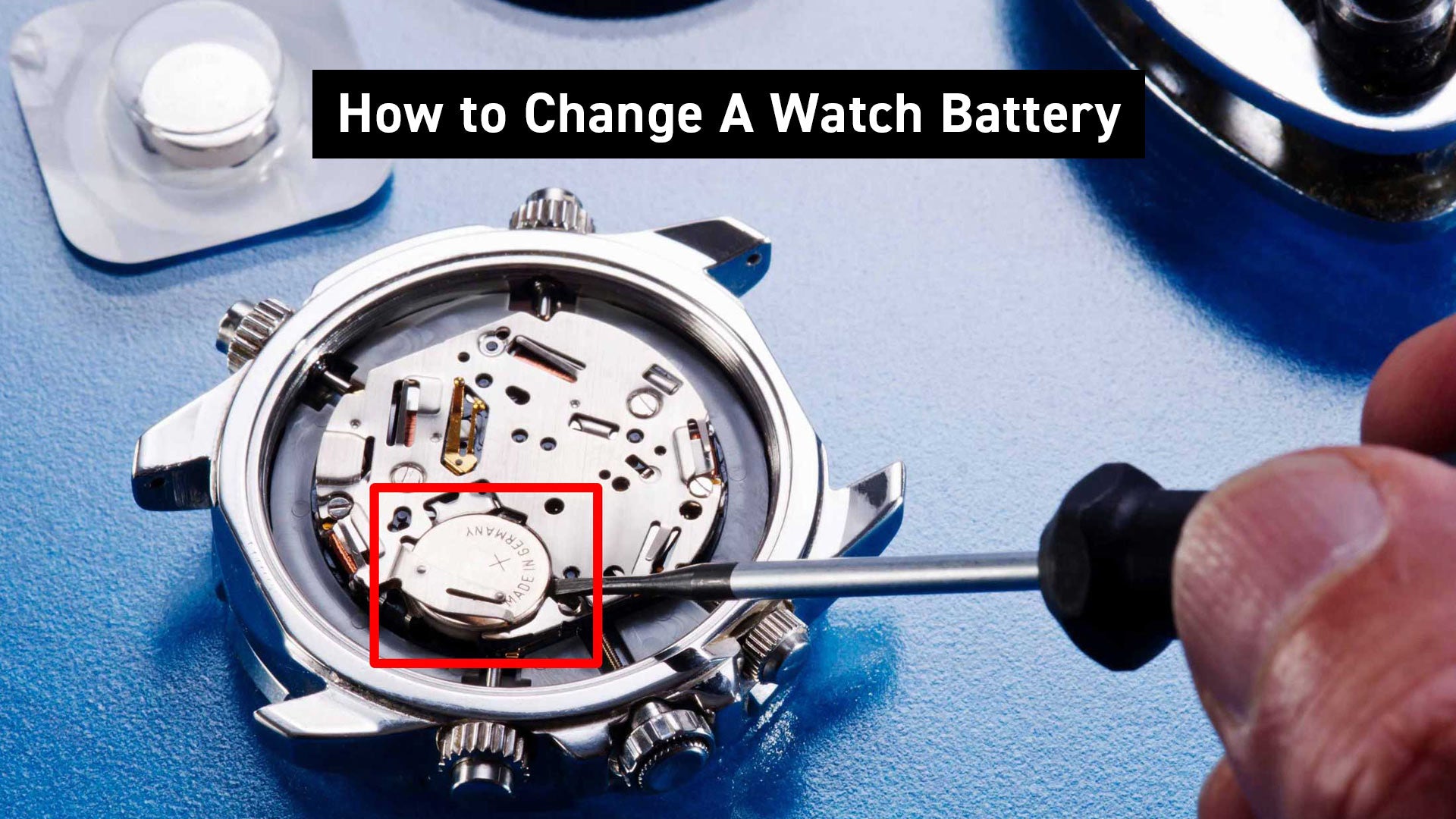In today’s fast-paced world, a watch is more than just a timekeeping device; it's a reflection of one’s personal style and a reliable companion in daily routines. However, the moment your watch stops ticking, it’s often a sign that the battery needs replacing. In this comprehensive guide, we’ll walk you through the simple steps of replacing a watch battery, delve into the various types of batteries, and touch upon different watch movements and how to ascertain if your watch is battery-operated.
Step-by-Step Guide to Replacing a Watch Battery
Tools You'll Need:
- A small screwdriver set
- A pair of tweezers
- A new watch battery
- A soft cloth
- Optional: Watch case opening tool
Step 1: Identify Your Watch Type
Examine your watch to determine the type of case back it has. It could be a snap-off, screw-off, or held by screws. This will dictate the tools and approach you need.
Step 2: Open the Case Back
For a snap-off case back, use a thin blade or a case opener to gently pry it open. For screw-off backs, carefully unscrew using the appropriate tool. If there are screws, use a small screwdriver to remove them.

(Watch Battery Location)
Step 3: Remove the Old Battery
Locate the battery and carefully remove it using tweezers. Be mindful of any small screws or brackets holding the battery in place.
Step 4: Insert the New Battery
Carefully place the new battery in the same position as the old one. Ensure it’s seated correctly and that any brackets or screws are replaced securely.
Step 5: Close the Case Back
Replace the case back securely, ensuring it’s properly sealed to maintain water resistance.
Step 6: Check Functionality
Once the case back is in place, check if the watch is working correctly.
Main Types of Watch Batteries
- Silver Oxide Batteries: Commonly used, these offer stable voltage and long life.
- Lithium Batteries: Known for their long life and higher voltage, ideal for digital watches.
- Alkaline Batteries: Less common, they are cheaper but have a shorter lifespan.

(Different Types Of Watch Batteries)
Understanding Watch Movements
- Quartz Movement: These watches use a battery to send an electric signal through a piece of quartz, which oscillates to keep time.
- Mechanical Movement: Powered by a wound spring, they don’t require a battery.
- Automatic Movement: Similar to mechanical, but the spring is wound automatically as you move your wrist.
Identifying if Your Watch Needs a New Battery
- The second hand skipping several seconds at a time.
- The watch stops working or loses time.
- The digital display fades or flickers.
Frequently Asked Questions
1. How do I know what size battery my watch has?
To determine the size of your watch battery, open the case back and locate the battery. The battery type is usually printed on the battery itself. Alternatively, refer to your watch's manual or the manufacturer's website for specific battery size details.
2. What kind of batteries do you use for watches?
Watch batteries are typically silver oxide or lithium. Silver oxide batteries are favoured for their steady voltage and durability, while lithium batteries are chosen for their long lifespan, particularly in digital watches.
3. Which watches do not use batteries?
Mechanical and automatic watches do not use batteries. Mechanical watches require manual winding, whereas automatic watches wind themselves as you move your wrist.
4. What is the most common watch battery?
The most common watch battery is the silver oxide type, known for its stability and longevity. These batteries are widely used in quartz watches.
5. What watch battery lasts longest?
Lithium watch batteries generally have the longest lifespan, lasting up to several years, making them ideal for high-drain watches like digital and smartwatches.
6. Is replacing a watch battery hard?
Replacing a watch battery can range from easy to moderately challenging, depending on the watch design. Simple tools and careful handling can make the process straightforward for most watch owners.
7. Which type of watch movement is best?
The "best" watch movement depends on personal preference and watch type. Quartz movements are praised for their accuracy and low maintenance, while mechanical movements are valued for their craftsmanship and traditional appeal.
8. How long can a quartz movement last?
A quartz movement can last indefinitely with proper care. The electronic components may require occasional servicing, and batteries typically need replacement every 2-5 years.
9. What is an automatic watch?
An automatic watch is a type of mechanical watch that winds itself automatically as the wearer moves their wrist, eliminating the need for manual winding.
10. Which watch battery is needed for Michael Kors watches?
Michael Kors watches often use standard silver oxide batteries. However, the specific battery type can vary, so it's advisable to check the model's manual or consult with a professional.
11. Which watch battery is needed for TAG Heuer watches?
TAG Heuer watches, particularly their quartz models, typically require high-quality silver oxide batteries. It's recommended to refer to the specific model's guide for accurate battery information.
12. Which watch battery is needed for Fossil watches?
Fossil watches usually require standard watch batteries like silver oxide. The exact battery type can depend on the model, so consulting the watch's manual or a professional is suggested.
Conclusion
Replacing a watch battery is a simple yet satisfying task. Not only does it save time and money, but it also extends the life of your beloved timepiece. With this guide, you’re well-equipped to keep your watch ticking smoothly. Remember, the right battery type and a careful approach are key to success.












How To Change Your Apple Watch Strap: An Easy Guide
What Is A Tourbillon Watch?